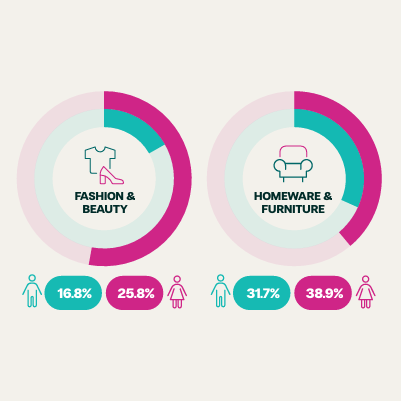What to do if your lender stops lending

So, there you are. You’ve launched a checkout finance offering. You’re converting more customers than ever before. Average transaction values have shot up. And a considerable portion of your business now depends on this method of payment.
But then, one day you wake up to discover your lender’s business has collapsed, and they’ve suddenly stopped lending.
Now you face the prospect of being unable to offer checkout finance to your customers any more – and losing that share of business you’ve come to depend on.
Let’s be clear: this is a very rare and highly unlikely situation. Retail finance is a strong and growing industry – there are more businesses queuing up to get involved than there are on their way out (just ask Apple). Still, it’s not outside the realm of possibility, and as a merchant you should always have a Plan B.
With that said, here are our recommendations for what to do if your checkout finance lender stops lending.
1. Take stock
The first and most important step is not to panic, but rather to gather as much information about the situation as you can. It may help to run through this checkout finance checklist of questions to ask yourself and your lender.
These include:
- Is your lender stopping your service immediately, or have they given you a notice period?
- Can they refer you to another lender who would be willing to start underwriting your checkout finance programme right away?
- If not, how long will it take for you to find a new lender? Are there any interim options available to you in the meantime?
- In either case, do you have everything you need to make sure you are ready to get set up with a new lender? This might include a credit reference check for your business, an audit of your existing checkout platform and current integrations, and a vetting process to understand the strengths and weaknesses of other lenders on the market.
- If you are switching to a new lender, what will the process and lead time be? Do you need to submit an RFP? How long will it take to negotiate commercials?
- Do you use a standardised plug-in (like Shopify or Magento), or will you need a bespoke integration?
- Do you have an in-store presence? If so, how long will it take you to train your teams on the new finance offering? How many hours will be lost to training activities?
- What is the embedding period? How long will it take for staff to become comfortable using your new finance?
- Will you need to change your marketing communications? For instance, if you have planned promotional windows around your checkout finance programme, will you need to cancel these campaigns?
- Will you need to update your payment gateway to stop new customers from entering the checkout finance portal?
As you can see, there is a lot to cover. The good news is, if you were partnered with a mature and reputable lender, there is a good chance they will be able to walk you through these steps.
They may even be able to help you continue your retail finance operation long enough to help you ensure a smooth transition to your next lender. On that note, the best case scenario would be if you could…
2. Ask for a referral
Your lender is probably well-connected within the checkout finance space, which means they may be able to refer your custom to another lender.
Since your lender will know and understand your business model, this is likely to make the process of securing a second supplier much easier for you. Your lender can lead the conversation, recommending you to other suppliers who are hungry for your business.
Seeking a referral is a good way to speed up the process of partnering with a new lender. But if you need to go back out to the market to find a new lender, you should try to do this right away. And the first thing to do is…
3. Make a shortlist of new lenders
The process of acquiring a new lender will look remarkably similar to the process of acquiring your first lender. The key difference is you will have greater experience and expertise, which may help you to find an even better deal the second time around.
In searching for a new lender, you should pay close attention to their long-term business models. This is to help mitigate the risk your new lender also backs out the market, leaving you high-and-dry a second time around.
To that end, you may want to interrogate your shortlist of lenders, asking them questions such as:
- How sustainable is their business model? How do they ensure profitability and return on investment from their lending programme?
- How do they underwrite loans? Are they lending from their own balance sheet and, if so, how much capital do they have behind them?
- If they are borrowing from a third-party, are they protected against fluctuating interest rates?
- How do they minimise risk? Do they accurately credit check customers? Do they always take a deposit?
- Do they offer interest-bearing as well as interest-free loans?
Lenders that are able to offer a comprehensive suite of products, backed by stable capital, and who can present a long-term vision for their lender programme are the sorts of lenders you’ll want to progress the conversation with. Meanwhile, you may want to…
4. Consider interim options
At this point, your priority as a business will probably shift to surviving the change-over period. You’ll need to find a way to continue your retail finance programme (or some iteration of it) until you can fully integrate with a new lender. This could take weeks or even months, so what can you do in the meantime?
Implementing a quick-and-easy Buy Now, Pay Later (BNPL) programme is one way you could continue to finance checkout loans. Buy Now, Pay Later is a form of retail finance after all – the biggest difference is that loan values are typically capped at around £1,000, meaning it will be difficult to lend against the value of big-ticket items.
But, on the upside, BNPL is typically much easier and quicker to integrate into your checkout, sometimes requiring only a single API integration. As a short-term option, it may be exactly what you need.
5. Protect yourself from losing your lender again
Once the dust settles, one of the first questions you will undoubtedly ask is how to prevent this situation from happening again.
We must emphasise once more that a lender stopping lending is a very rare circumstance. Still, as the old saying goes: ‘stop lending on me once, shame on you. Stop lending on me twice…’
So, how best to protect yourself from this happening again? One thing you may also want to consider is switching to a platform supported by multiple lenders. While partnering with one lender may leave you exposed if that lender stops lending, with a platform supported by multiple lenders you won’t need to worry – if one lender lets you down, you can simply switch to another and continue your retail finance programme with no interruption.
There are many other benefits too. For instance, with multiple lenders at your disposal, you can offer a variety of retail finance options at your checkout, including both short-term interest-free and long-term interest-bearing loans. And you can benefit from having a seamless journey at your checkout, without having to build one yourself.
There is even the option to lend across multiple countries through a single integration if you choose a multi-lender platform that includes international lenders.
At the end of the day, the loss of one lender could open the door to choosing an even better one second time around.
The bottom line
While it is rare that a lender will suddenly stop lending, it’s not unheard of. Recent news around the collapse of Openpay in Australia may have alerted many of us to the potential of a sudden termination of service. As a merchant, it is your responsibility to be prepared for this circumstance and take action to mitigate the risk it presents to your business.
If you depend on a single lender to underwrite your retail finance programme, now may be the time to start hedging your bets. Either by choosing a second lender, or by switching to a multi-lender platform like Divido, you can be sure there will be no interruption if your lender breaks up with you.
Secure your retail finance programme today by speaking to Divido, and see how our award-winning, multi-lender platform could support your retail finance programme with access to multiple Tier One lenders.
Keen to know more?








